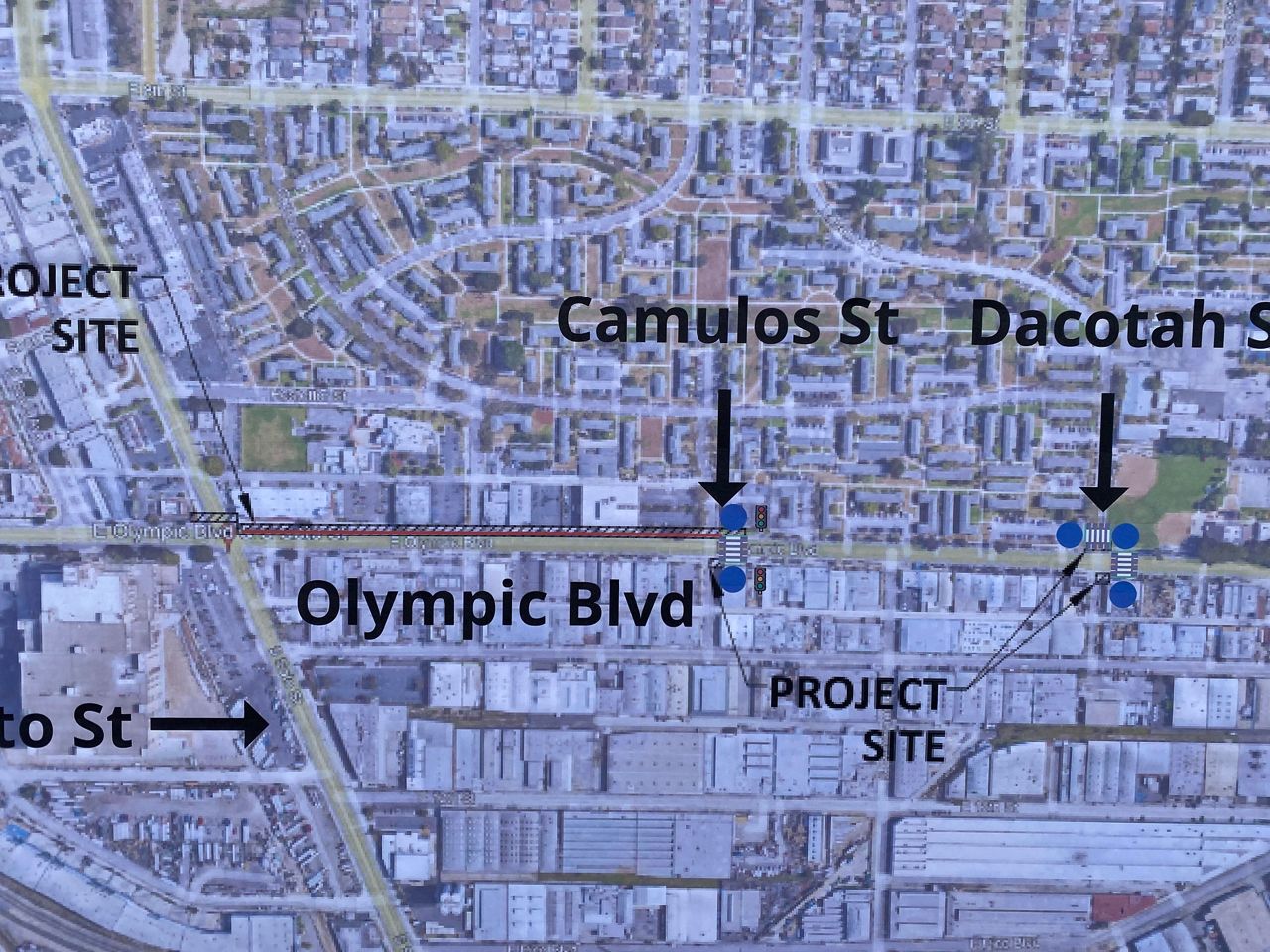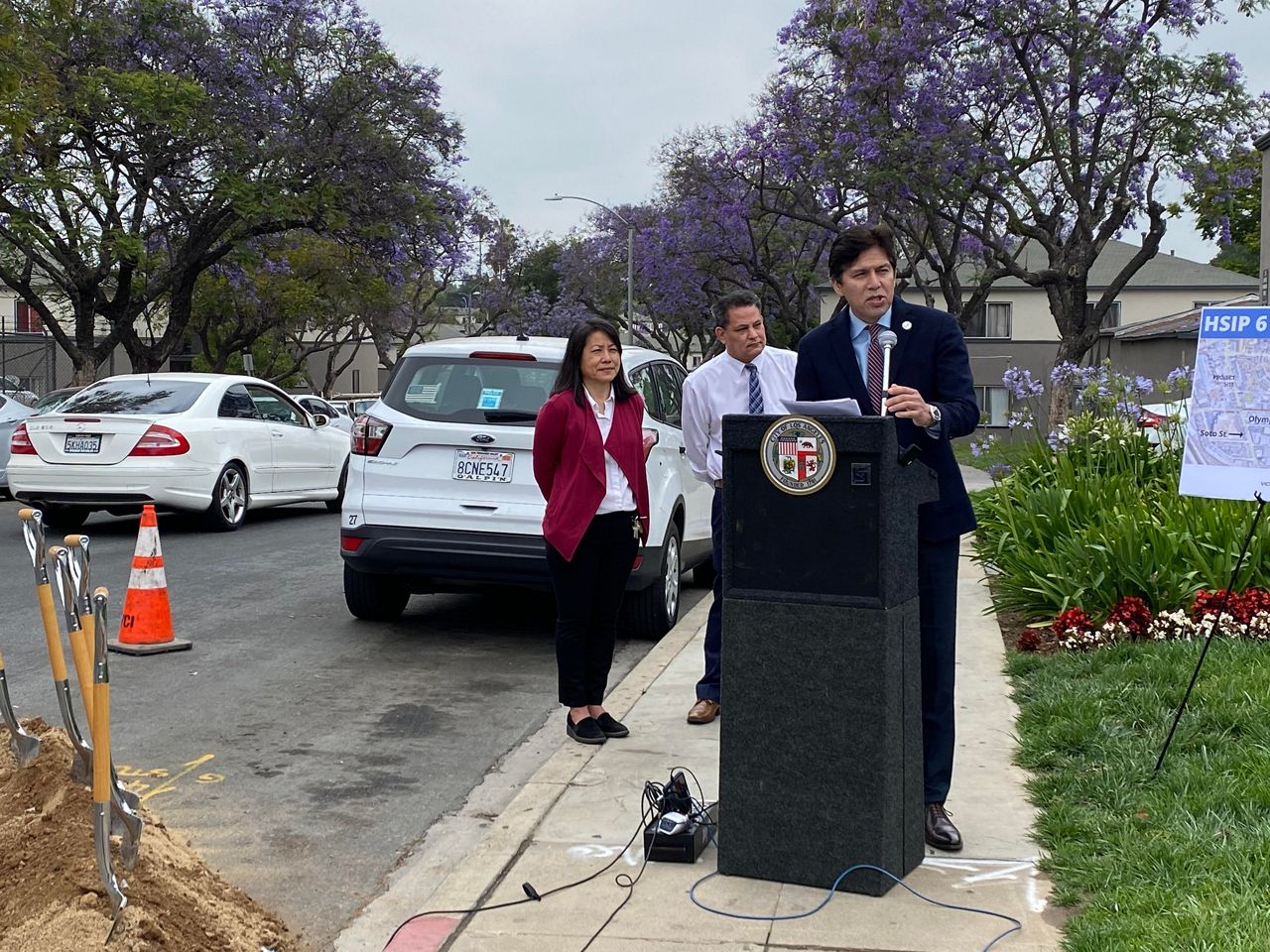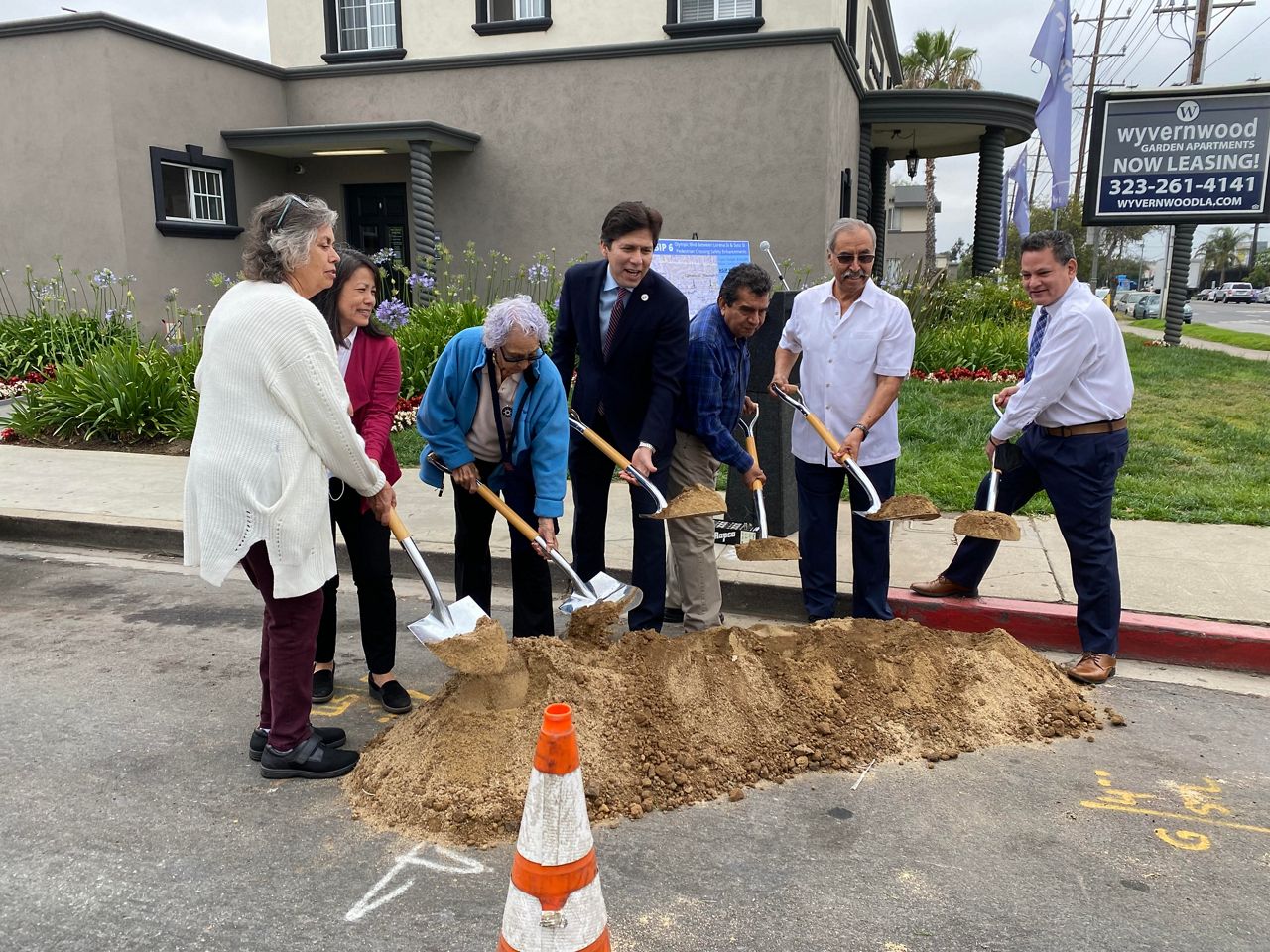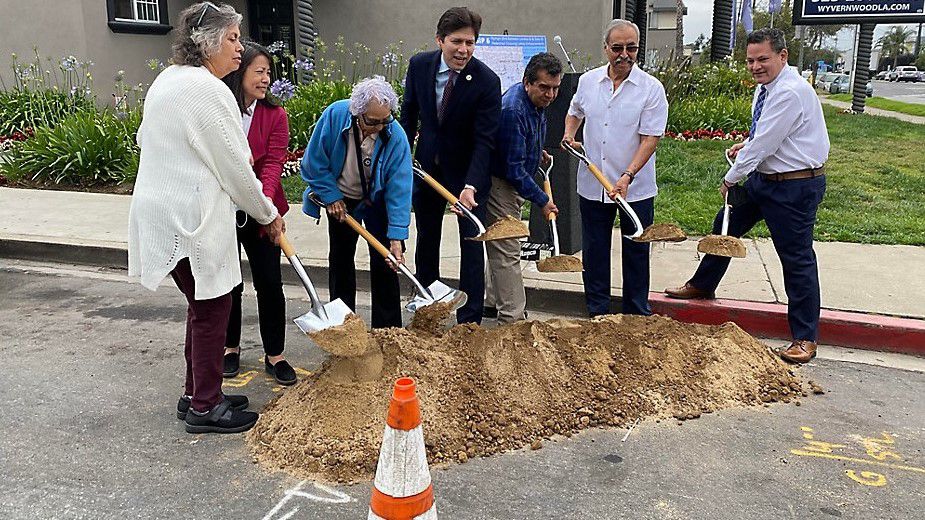BOYLE HEIGHTS, Calif. — As a stream of cars and big rigs rolled along Olympic Blvd. in Boyle Heights Tuesday, city officials broke ground on a pair of new crosswalks designed to decrease pedestrians’ risk. At the intersections of Camulos St. and Dacotah St., they will upgrade each crosswalk with a shortened crossing distance and flashing beacon to alert motorists when a pedestrian is walking across the road.
“No one should have to risk their life to cross the street,” City Councilmember Kevin de Leon said at the groundbreaking, just steps away from an unprotected crosswalk on Olympic Blvd. as vehicles sped by.
Pedestrians are among the most vulnerable road users. Nationally, pedestrian deaths increased 13% last year, according to an estimate of 2021 roadway fatalities from the National Highway Traffic Safety Administration released Tuesday. Almost 43,000 people died on U.S. roads last year — a 10.5% increase compared with 2020 and the largest annual increase since NHTSA began its Fatality Analysis Reporting System in 1975.
LA is part of that national trend. Traffic fatalities in the city increased 20% in 2021 compared to 2020. Last year, 294 people died on LA roadways; 132 were pedestrians and 18 were cyclists. Over 1,500 people were seriously injured.
This year is shaping up to be even worse. As of May 14, 111 people have died in traffic crashes so far in 2022 — eight more than had died by the same date in 2021.
“Today is an important step in reversing these tragic trends,” De Leon said.

The two crosswalks that are being upgraded with curb extensions and flashing beacons are at intersections that would otherwise require pedestrians to walk several blocks out of their way on Olympic Blvd. to cross at a signaled light. Once the improvements are completed later this summer, pedestrians will press a button on a post showing they intend to cross the street, activating a blinking yellow light that will let motorists know a person is crossing.
Flashing beacons provide more visibility for pedestrians, especially at night, according to Los Angeles Department of Transportation Capital Projects Engineer Carlos Rios. LADOT plans to make similar improvements at a handful of other intersections along Olympic Blvd. in Boyle Heights, which is one of several streets the agency has identified as part of a high injury network of streets with a greater incidence of traffic fatalities and serious injuries.

The intersections at Camulos and Dacotah Streets are among the one-third of city crosswalks that lack warning lights to let drivers know when a pedestrian is crossing the street. But that is likely to change.
Last October, De Leon introduced a motion calling on the city to upgrade LA’s 202 uncontrolled marked crosswalks with flashing beacons. Such crosswalks have signage and street striping, but no other form of traffic control. During last week’s budget negotiations for the 2022-2023 fiscal year, de Leon, who serves on the City Council budget and finance committee, secured a year of funding to begin the crosswalk lighting upgrades.
The two crosswalk improvements in Boyle Heights have a total cost of $623,000, of which $566,000 came from the federal government’s highway safety program. The city of LA paid 10%, or roughly $57,000.

“There was a pattern of crashes at this location that warranted funding through the safety program managed by the federal government,” Rios said. “At LADOT, we are committed to creating safe and walkable spaces in our neighborhoods, especially in areas around schools, transit centers and recreational parks. These are places where communities need to walk and need to cross the street.”
The crosswalk improvements at Dacotah are near an elementary school and an early education center.
The upgrades are being made when LADOT’s Vision Zero program has come under fire for failing to slow traffic deaths in the city. When Mayor Eric Garcetti first announced the program in 2015, the goal was to reduce traffic fatalities to zero by 2025. Instead, traffic deaths have increased, because of reckless driving behaviors such as speeding and drunk driving.
Last month, the LA City Council voted unanimously to audit the Vision Zero program. While the LA Controller’s office has not yet decided whether it will conduct the audit, LADOT stands firm in its belief that the millions of dollars it has spent on roadway improvements so far is paying off.
“Where we have made safety improvements, we see a vast improvement in safety outcomes,” said LADOT spokesperson Colin Sweeney.
Sweeney pointed to a stretch of Foothill Blvd. that had experienced two roadway fatalities within just a few months of each other in 2016. Following a road diet that took away a lane of traffic and put in a protected bike lane, there have been zero fatalities and a 63% reduction in severe injury collisions.
Part of the reason Vision Zero doesn’t appear to be working is because it’s such a large city, he said. LA has 8,500 miles of road — 6% of which account for 70% of pedestrian deaths and fatalities. To upgrade the most troublesome 6% translates into 510 miles of safety improvements, each of which requires analysis, engineering, construction, money and, of course, time.
“For more than 10 years, residents and business owners in this community in Boyle Heights have pleaded for officials to step forward with solutions along this corridor and mitigate the dangers,” de Leon said. “I’m here this morning to give the community what they have rightfully demanded.”
CORRECTION: An earlier version of this article incorrectly stated the year of the fatalities on Foothill Blvd. The error has been corrected. (May 18, 2022)



